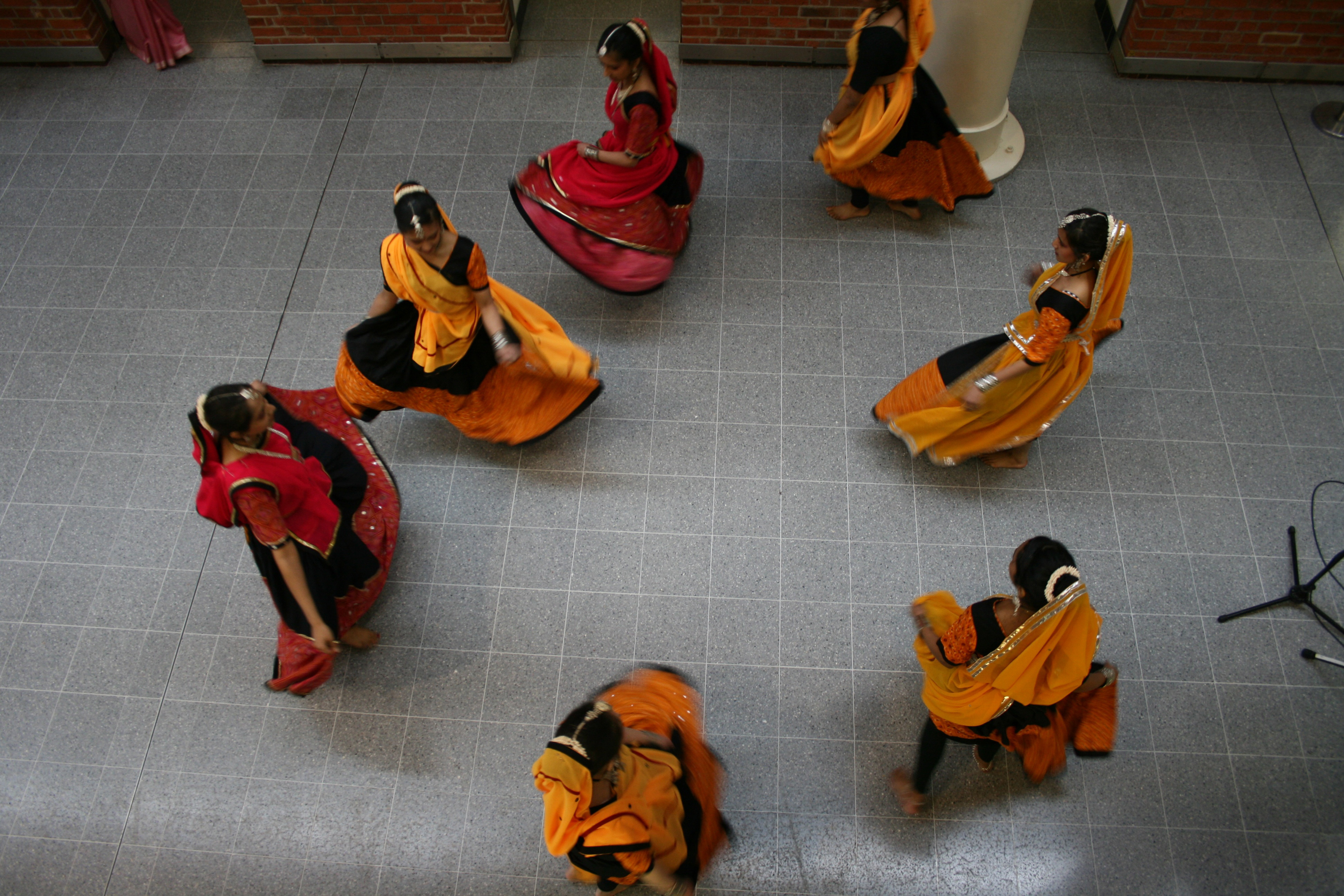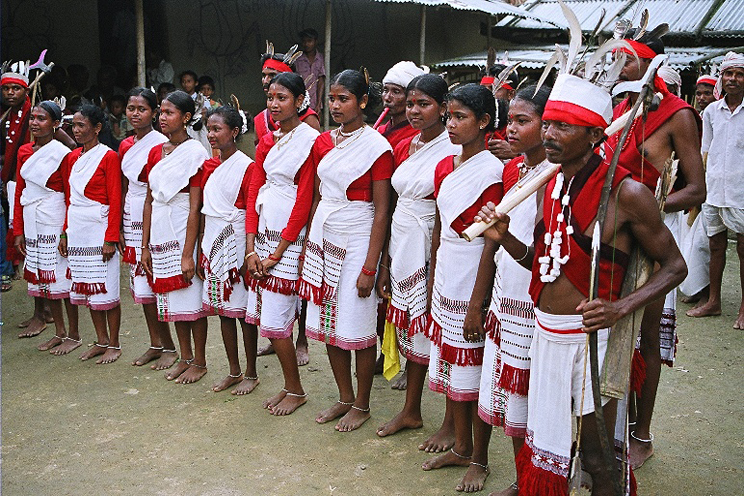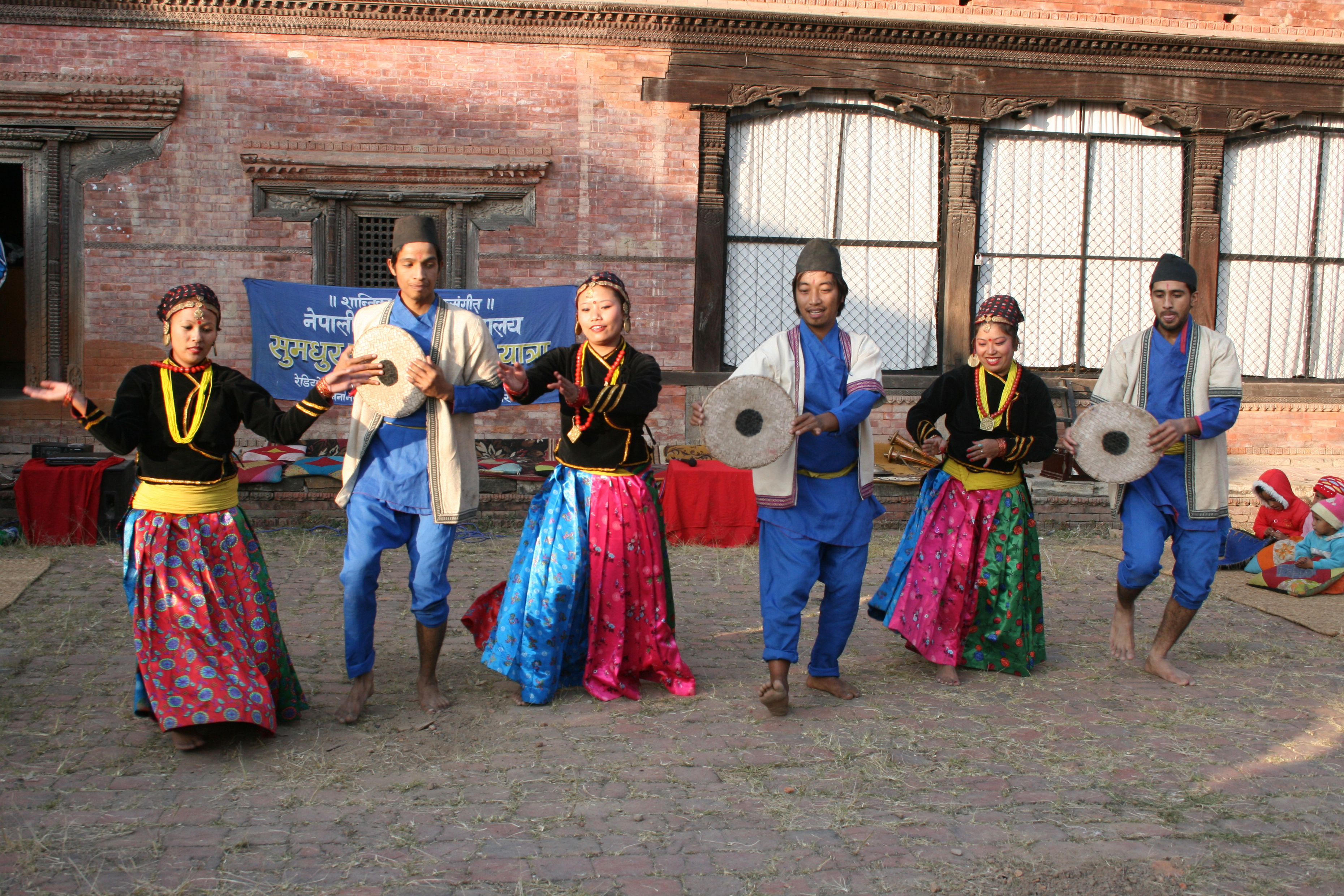
|
Traditional Dance in South Asia Dance and music are the oldest and most original art forms in the world and especially numerous and developed in South Asia. Thus the present-day practice of dance relates to the most ancient past; one could say that it is contemporary and traditional at the same time. Traditional dance is an integral part of the music culture in South Asia (India, Pakistan, Bangladesh and Sri Lanka) and exists in numerous incarnations. One could group South Asia Dance culture as follows:
Especially within the tribal and rural traditions, musical performances often feature specialised dancers and community dance. In nearly all tribal villages, men, women and children dance together on many occasions. As with singing and the playing of musical instruments here the average knowledge and skills are generally higher than in any other south Asian communities. Even in rural and tribal villages one can observe that participation in dance has been declining due to the impact of the massive film industry and television. Therefore most of these sophisticated dance genres can be considered endangered and, if no further steps for protection are taken, will become extinct in the near future. Even the well-known art dances are neglected by audiences and funding bodies. There are also positive developments such as the growing public interest in rural and tribal music and dance and an interaction of contemporary and traditional dancers and dance genres. |


